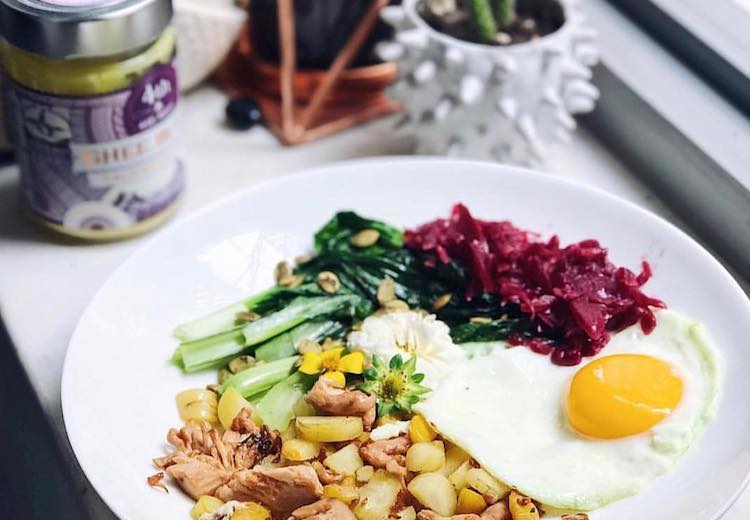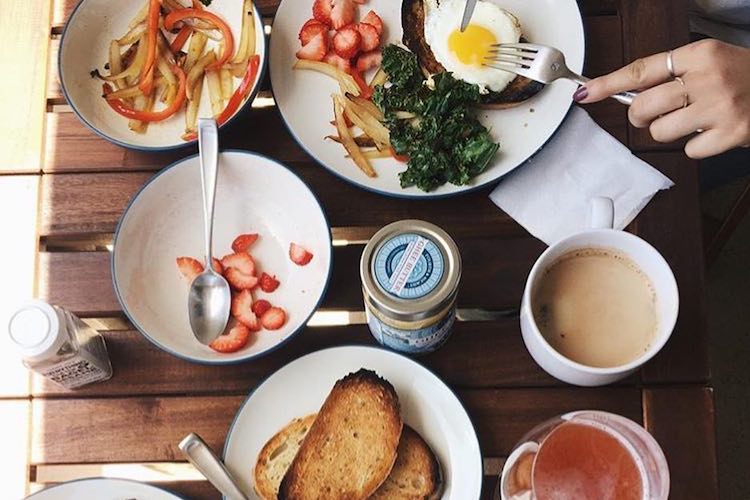Here’s Everything You Need to Know About Cooking With Ghee
Ghee has been a staple of Ayurvedic cooking for centuries. But recently, it's been having a moment among celebs (like Lo Bosworth, who uses the clarified butter instead of other cooking oils) and wellness devotees who don’t obsess over doshas or chakras. (Bulletproof coffee with ghee and collagen, anyone?) Yet there’s still confusion about exactly what ghee is, not to mention how to tap into its powers.
Ghee is a butter reduction that's made by boiling [some say simmering] butter and then filtering it through a sieve,” says Raquel Tavares Gunsagar, the cofounder of the popular Fourth & Heart brand of the stuff. “In the process, the water and milk solids are removed, making it a lactose-free and shelf-stable butter.”
Registered holistic nutritionist Jordana Hart points out that ghee is commonly called liquid gold—for its appearance and its value. “Ghee is famous for its healing properties and many health benefits,” she adds, noting that it supports weight management, improves digestion, and reduces inflammation in the body. Okay, I'm listening.
Scroll down to learn more about the health benefits that have made ghee a star ingredient for centuries.

How is ghee good for you?
In addition to being safe for those who are lactose intolerant (and Paleo-friendly), ghee has some serious gut-health-boosting powers. To get all Ayurvedic, it’s considered sattvic, a term that’s loosely defined as balancing to your body. “Ghee has butyric acid, which is found in the lining of your gut and helps your body digest foods," Gunsagar says.
"It also has omega 3 and 9 fatty acids," says Gunsagar. "And when it’s made with grass-fed butter, it contains the nutrients from the grass, like vitamins A and K.” Which means good news for your bones, eyes, and immune system. Grass-fed ghee will be a bright yellow color (and probably brag about the quality somewhere on the label).

{{post.sponsorText}}
Ghee also has a high smoke point (the point where fats break down and become smoke) when you cook with it. Which, surprise, isn't true for many oils. Some are much easier to smoke (accidentally), and that changes their fatty-acid profile. Gunsagar says they become rancid and essentially turn into hydrogenated fat (AKA bad news). Smoke from cooking oils has also been found to be potentially carcinogenic (double bad news).

How do you cook with clarified butter?
Easy: Just use it to replace butter or oil in your normal cooking. Hart notes that ghee has a more intense buttery flavor than regular butter (which makes sense given that the water is gone) so you can use half the amount without sacrificing flavor.
You can also stir it into your coffee or spread it on toast (as Hart likes to do). Some people simply take a teaspoon in the morning. (Maybe use it as a chaser with your shot of apple cider vinegar. Cheers!)
It's super easy to make your own ghee—here's how. Then, try using it topically to get a radiant complexion.
Loading More Posts...